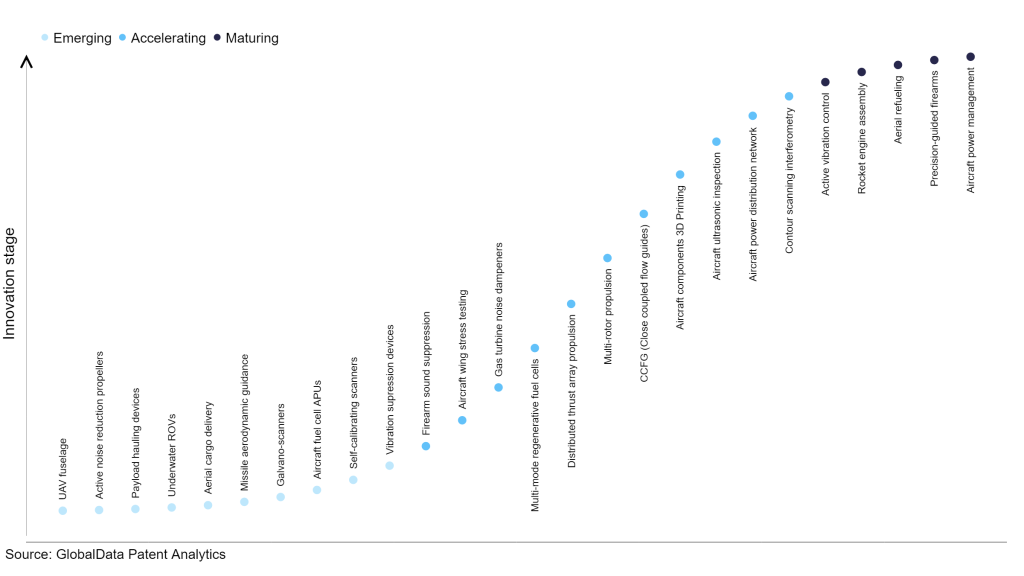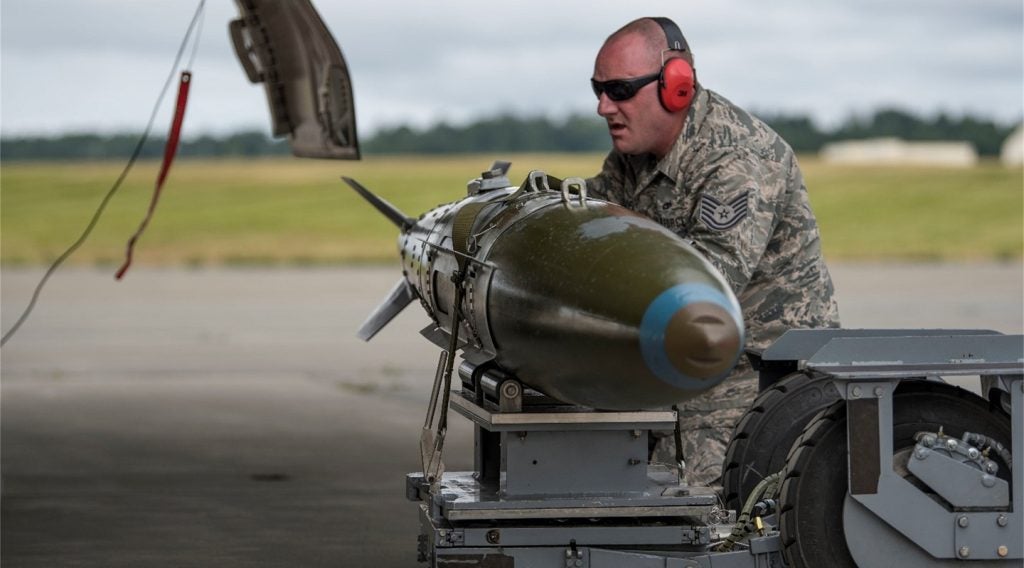The aerospace and defense industry continues to be a hotbed of patent innovation. Activity is driven by the uptake of advanced technology, and growing importance of technologies such as hypersonics and advanced materials. In the last three years alone, there have been over 237,000 patents filed and granted in the aerospace and defense industry, according to GlobalData’s report on Innovation in defense: contour scanning interferometry. Buy the report here.
However, not all innovations are equal and nor do they follow a constant upward trend. Instead, their evolution takes the form of an S-shaped curve that reflects their typical lifecycle from early emergence to accelerating adoption, before finally stabilizing and reaching maturity.
Identifying where a particular innovation is on this journey, especially those that are in the emerging and accelerating stages, is essential for understanding their current level of adoption and the likely future trajectory and impact they will have.
110 innovations will shape the aerospace and defense industry
According to GlobalData’s Technology Foresights, which plots the S-curve for the aerospace and defense industry using innovation intensity models built on over 206,000 patents, there are 110 innovation areas that will shape the future of the industry.
Within the emerging innovation stage, aircraft fuel cell APUs, self-calibrating scanners, and vibration suppression devices are disruptive technologies that are in the early stages of application and should be tracked closely. Aircraft ultrasonic inspection, aircraft power distribution network, and contour scanning interferometry are some of the accelerating innovation areas, where adoption has been steadily increasing. Among maturing innovation areas are precision-guided firearms and aircraft power management, which are now well established in the industry.
Innovation S-curve for the aerospace and defense industry

Contour scanning interferometry is a key innovation area in aerospace and defense
Contour scanning interferometry is a technique where superimposed waves are utilised for information gathering. It has applications across various industries.
GlobalData’s analysis also uncovers the companies at the forefront of each innovation area and assesses the potential reach and impact of their patenting activity across different applications and geographies. According to GlobalData, there are 260+ companies, spanning technology vendors, established aerospace and defense companies, and up-and-coming start-ups engaged in the development and application of contour scanning interferometry.
Key players in contour scanning interferometry – a disruptive innovation in the aerospace and defense industry
‘Application diversity’ measures the number of applications identified for each patent. It broadly splits companies into either ‘niche’ or ‘diversified’ innovators.
‘Geographic reach’ refers to the number of countries each patent is registered in. It reflects the breadth of geographic application intended, ranging from ‘global’ to ‘local’.
Patent volumes related to contour scanning interferometry
Source: GlobalData Patent Analytics
Faro Technologies is the top patent filer in contour scanning interferometry. The main focus of the company is 3D scanning for quality assurance in production and maintenance. Contour scanning interferometry will supplement existing 3D scanning techniques and provide new solutions to the aerospace and defense industry. Reducing maintenance times in commercial aerospace is a major cost driver, and patents are being filed to this effect. The second leading patent filer in this area is Boeing, which is also developing the technology largely for aerospace maintenance solutions. Other key patent filers in this area include Hexagon, Samsung, and Sony.
In terms of application diversity, Noveto Systems leads the pack, followed by JFE and Intel. By geographic spread, Novomatic is in the top position, followed by FedEx and IPG Photonics.
Contour scanning interferometry has significant applications for the aerospace and defense industry and will provide ongoing maintenance solutions in coming years.
To further understand the key themes and technologies disrupting the aerospace and defense industry, access GlobalData’s latest thematic research report on Aerospace & Defense.
Data Insights
From

The gold standard of business intelligence.
Blending expert knowledge with cutting-edge technology, GlobalData’s unrivalled proprietary data will enable you to decode what’s happening in your market. You can make better informed decisions and gain a future-proof advantage over your competitors.







